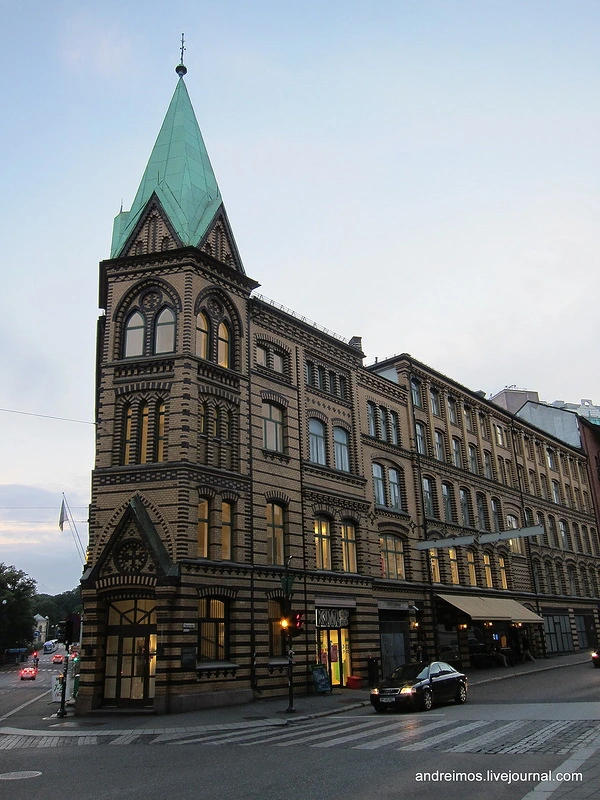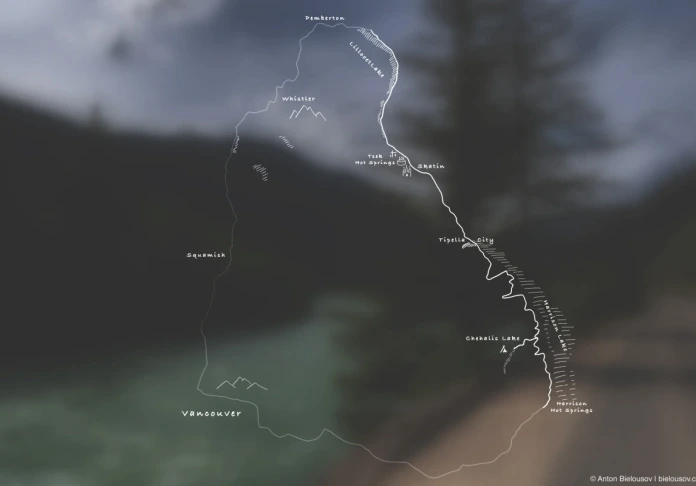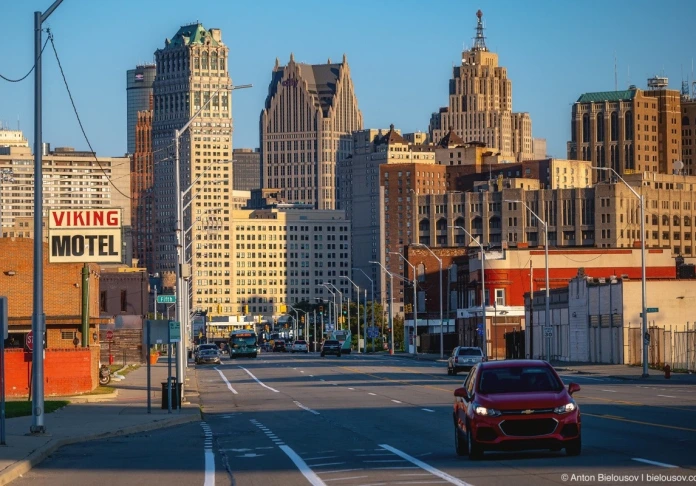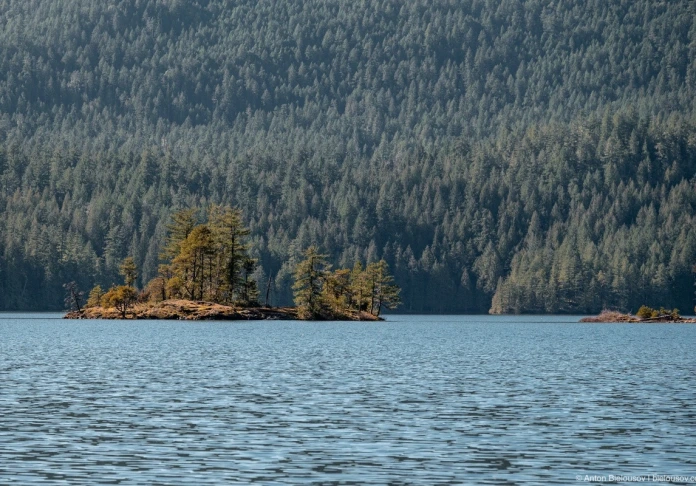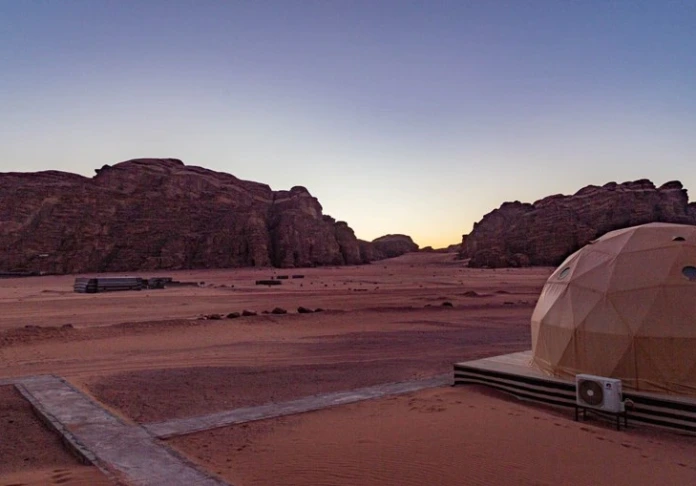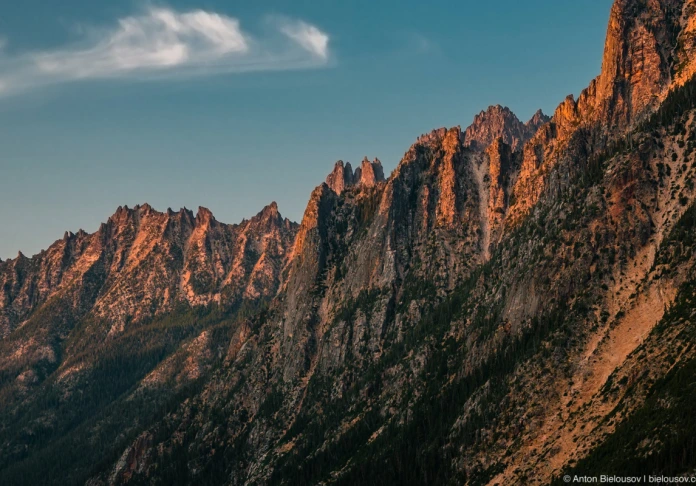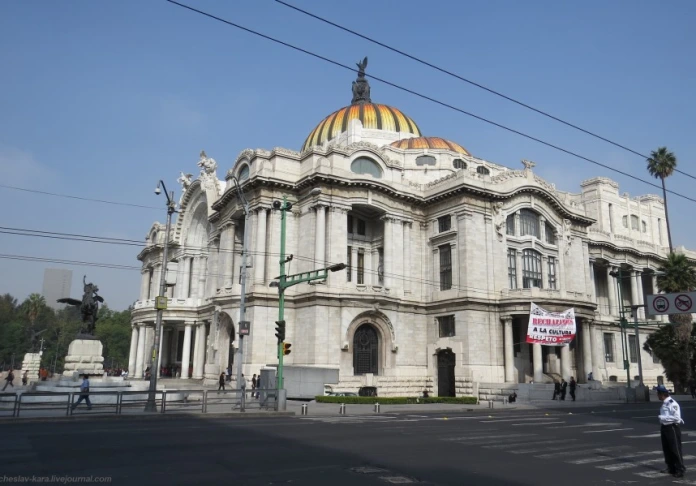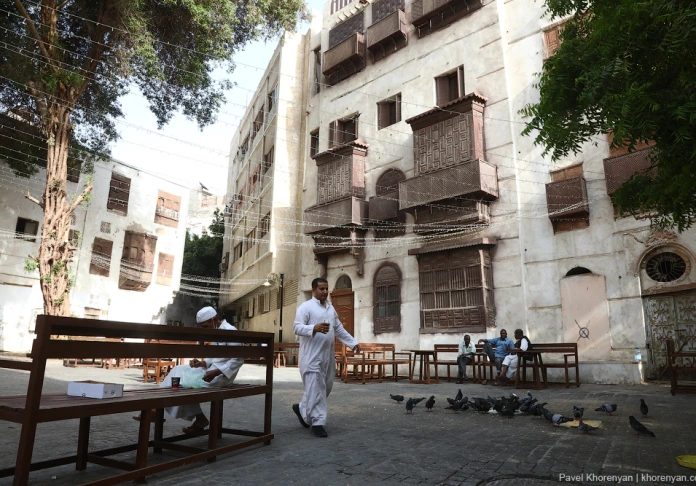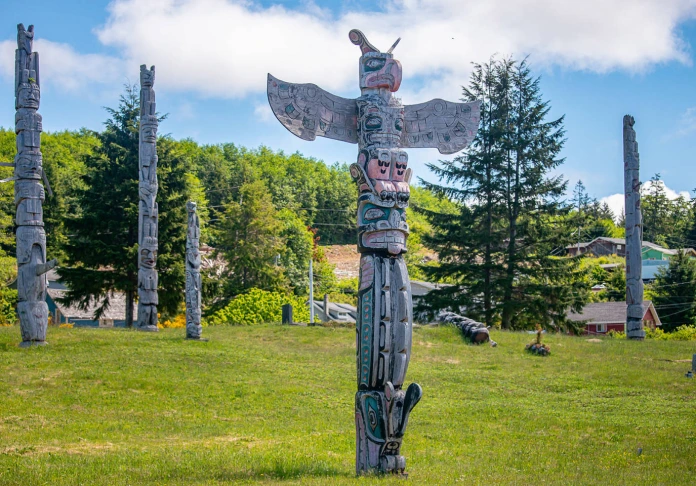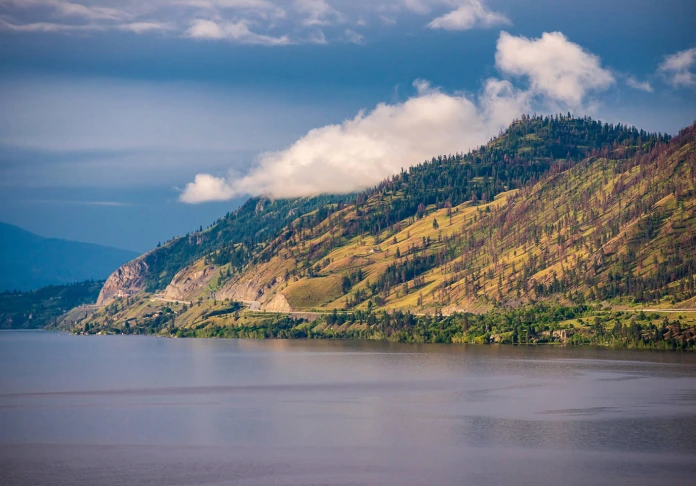Oslo
Introduction to the Norwegian capital, we started with the most famous park of the city, and perhaps the whole of Norway - Vigeland Sculpture Park ...
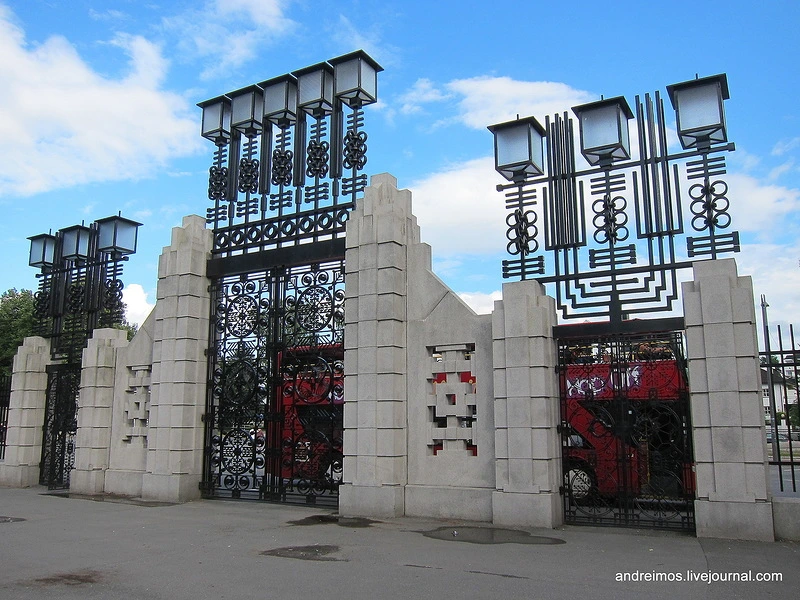
Gustav Vigeland (1869-1943) was considered the most talented Norwegian sculptor. In 1924 Vigeland moved to a new studio, located in the vicinity of the park Froner. Gustav chose this park to open an exhibition of his works, which later became the world-famous "Vigeland Sculpture Park."
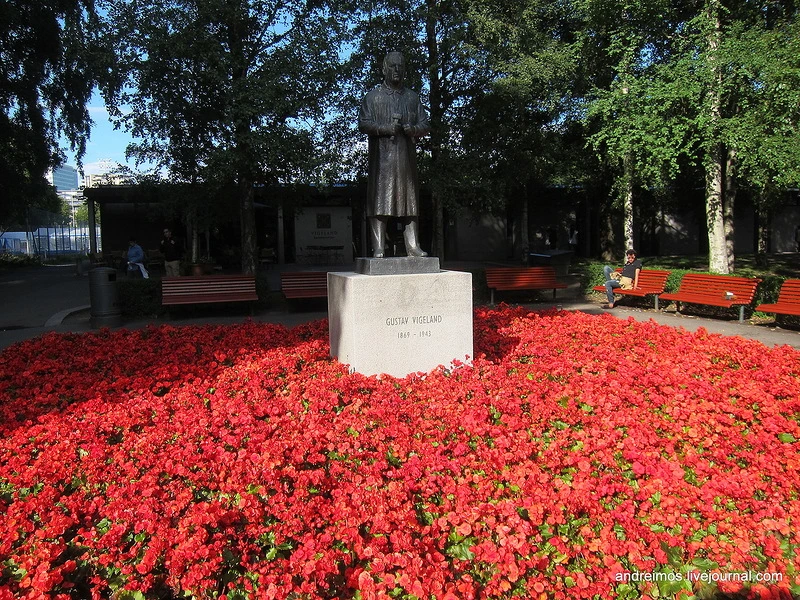
The park covers an area of 30 hectares and contains 227 sculptural groups. The main theme is the "human condition." Most of the statues depict people who are depicted in a variety of activities - running, wrestling, dancing, hugging, and so on. D.
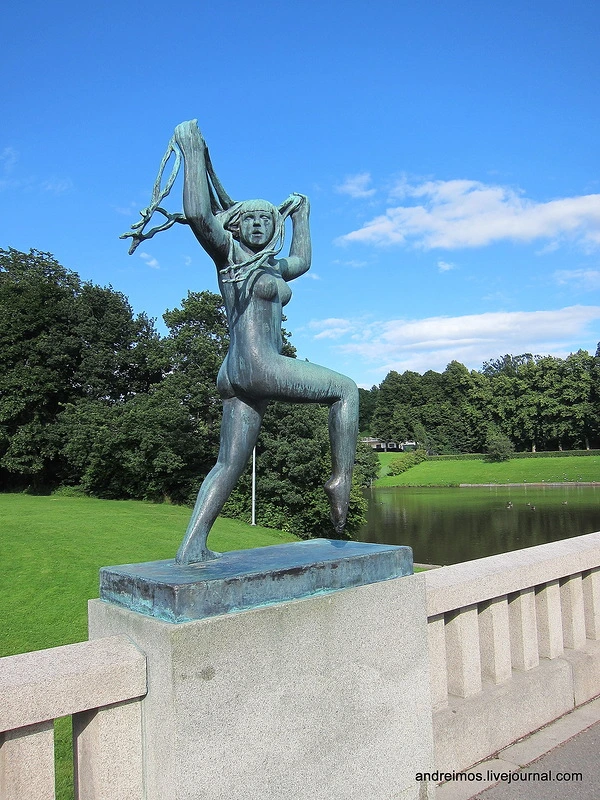
Each of the statues conveys a certain set of emotions, human relations, often - with a deep philosophical overtones, which makes many of the songs quite complex to understand. For example, the sculpture of an adult male, who bounces from infants.
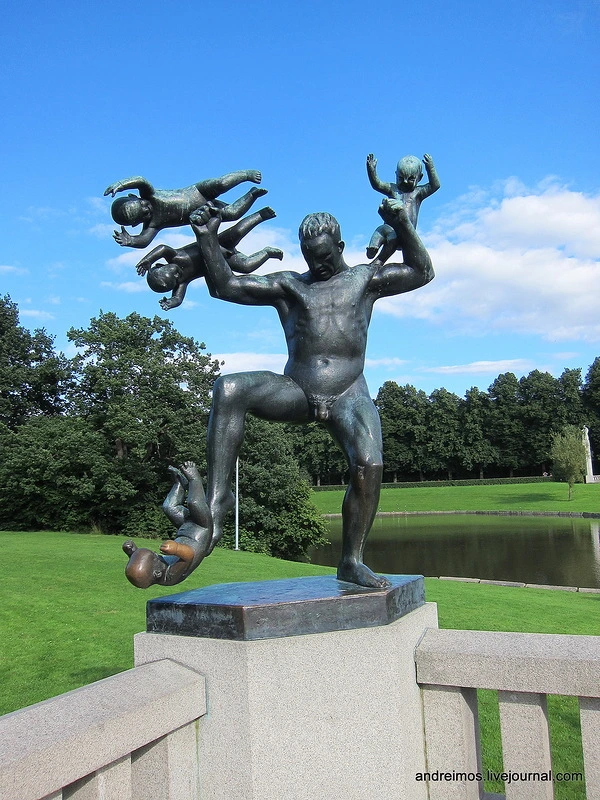
58 sculptures are placed along the hundred-meter bridge width of 15 m. All these bronze sculptures correspond to the basic plan of the park - the "human temperament." Here visitors can see one of the most popular articles of the park - "Angry Kid".
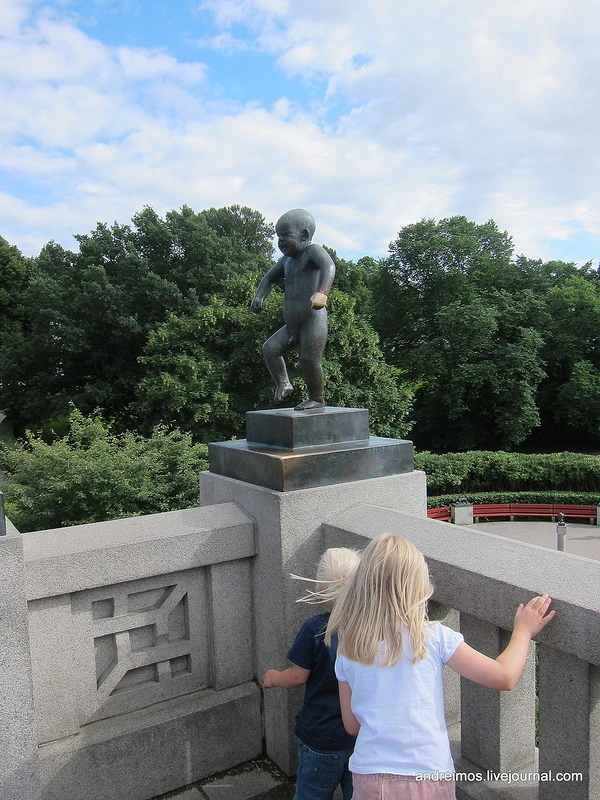
According to the original project made of bronze and decorated with 60 individual sculptures fountain I had to stand in front of the Parliament. Fountain, depicting children and skeletons on the branches of the giant trees, symbolizing that the death should be a new life. Around the fountain is a mosaic of white and black granite area of 1800 square meters. m. Vigeland worked on this monument more than 35 years.
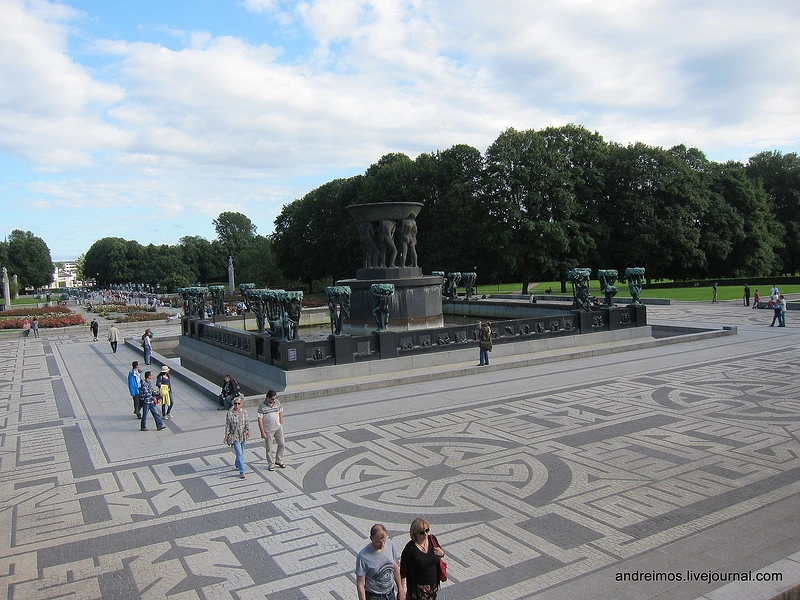
"The Wheel of Life" made in 1933-34. Wheel to some extent resembles a wreath depicting four people and a child, infinitely happy in its harmony. This symbol of eternity embodies the basic idea of the park - a journey of man from the cradle to the burial.
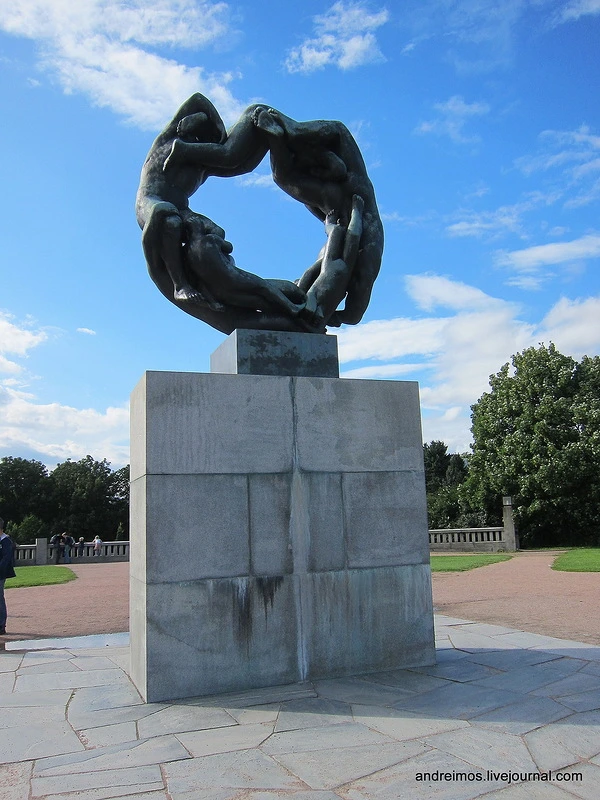
At the end of the 850 meters of the longitudinal coordinates of the park built a sundial, forged in 1930
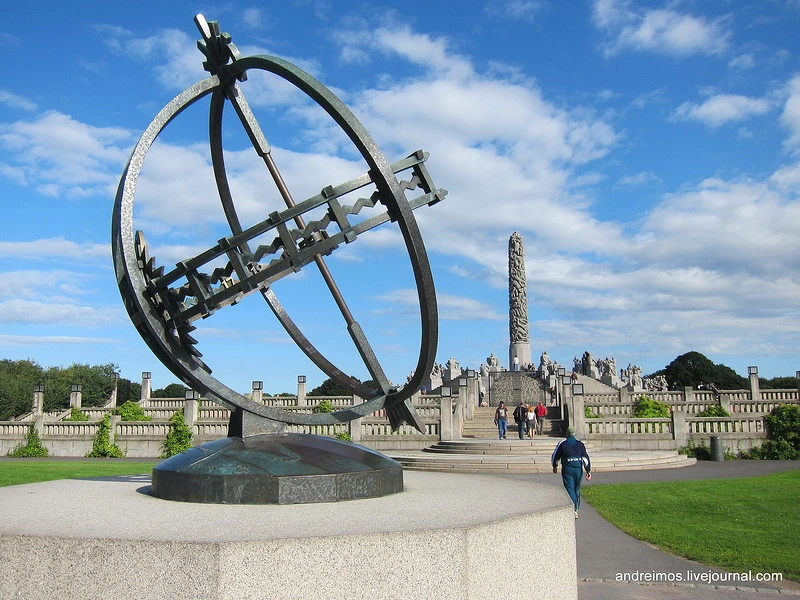
At the highest point of the park, located on the plateau of the central figure - Monolith. Construction of the massive monument began in 1924, when Gustav Vigeland modeled it out of clay in his studio. In the autumn of 1927 a block of granite weighing several hundred tons, was brought to the park from a stone quarry Halden. And it only established a year later.
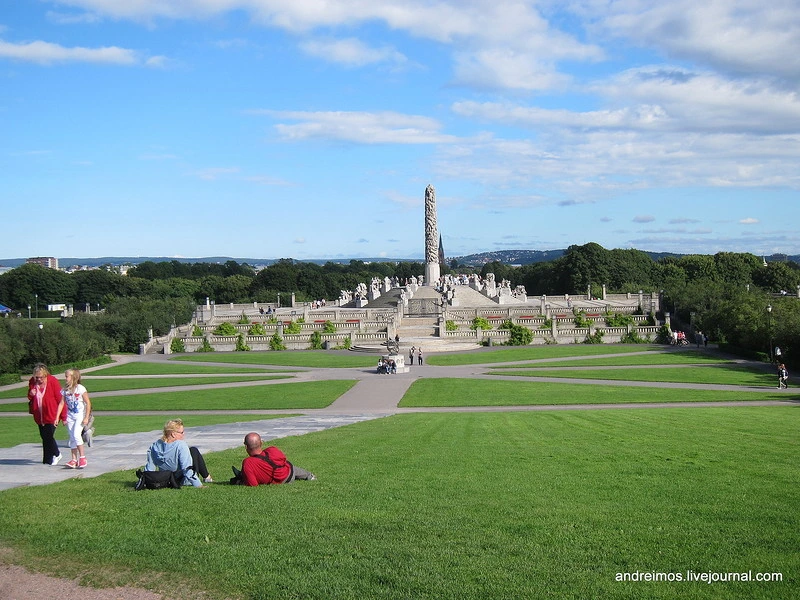
Tower housing Monolith height of about 14 m consists of 121 sculptures, rising to the heavens. The ensemble portrays a sense of intimacy, as the human figures embrace each other.
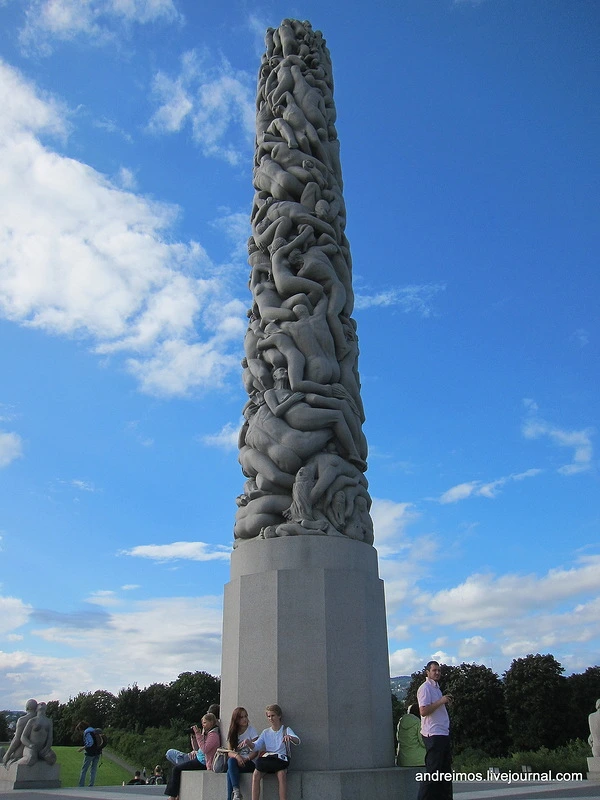
In social networks lately quite popular Vigeland figures represent how rotten and perverted European values.

On the edge of the park can be seen the famous Holmenkollen ski jump, which was built back in 1892 There is also the ski and biathlon center. In 1952 Oslo hosted the Winter Olympics.
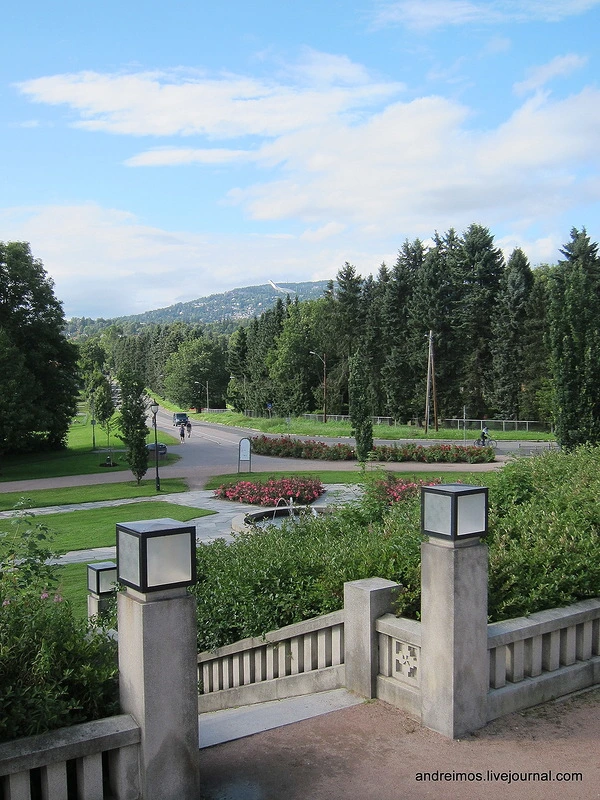
The Royal Palace was built for Charles III Johan, but has completed at Oscar I in 1849. Until 1905 the building was used only during the visits of the royal family in Christiania, and after the secession of Norway from Sweden, the palace was the main residence of the Norwegian monarch.
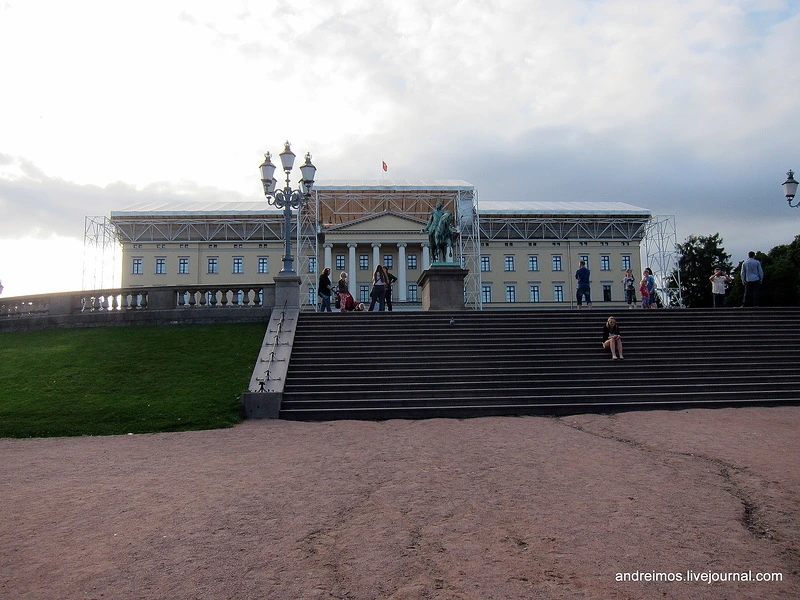
Ceremony of changing of the guard takes place in front of the palace 13.30-14.00. The dark blue uniforms have not changed during the lifetime of the battalion. One of the notable parts form a hat with feathers, copied from the Italian Royal Guard hats "Bersaglieri", who liked the Swedish Princess Louise. Royal Guard has a live mascot - a penguin Nils Olav, which is officially listed by Colonel-chief of the Guards. Interestingly, the penguin lives in Edinburgh Zoo.
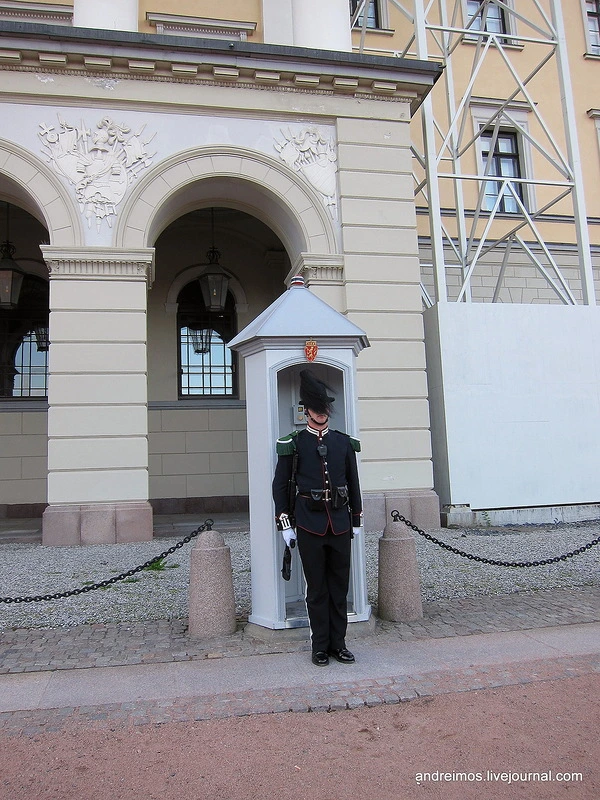
In front stands the equestrian monument to Karl XIV Johan. He is Napoleon's Marshal Jean-Baptiste Jules Bernadotte, who took the Swedish throne (Norway and then was part of Sweden).
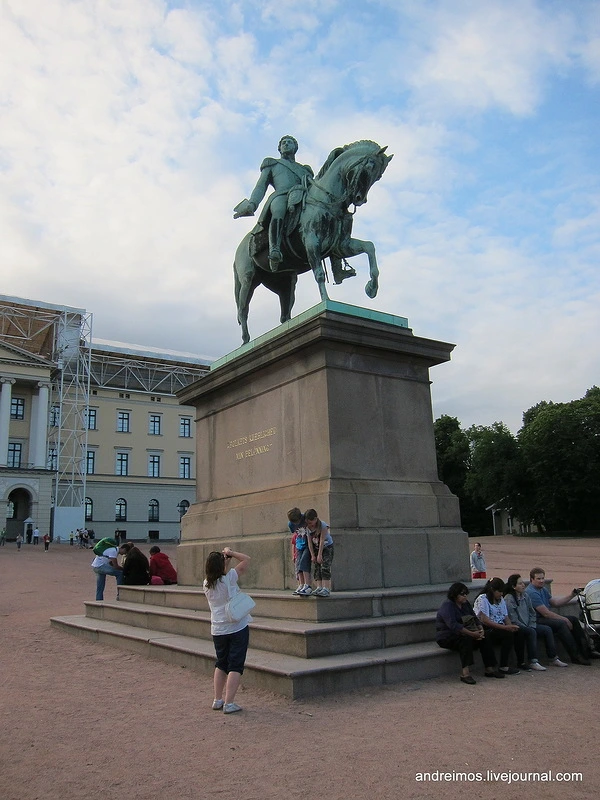
And this is the first 600 years Queen of Norway as an independent state - Maud of Wales (1869-1938), the youngest daughter of the British King Edward VII and Alexandra of Denmark, wife of the Norwegian King Haakon VII. It is named after an extensive part of Antarctica - Queen Maud Land.
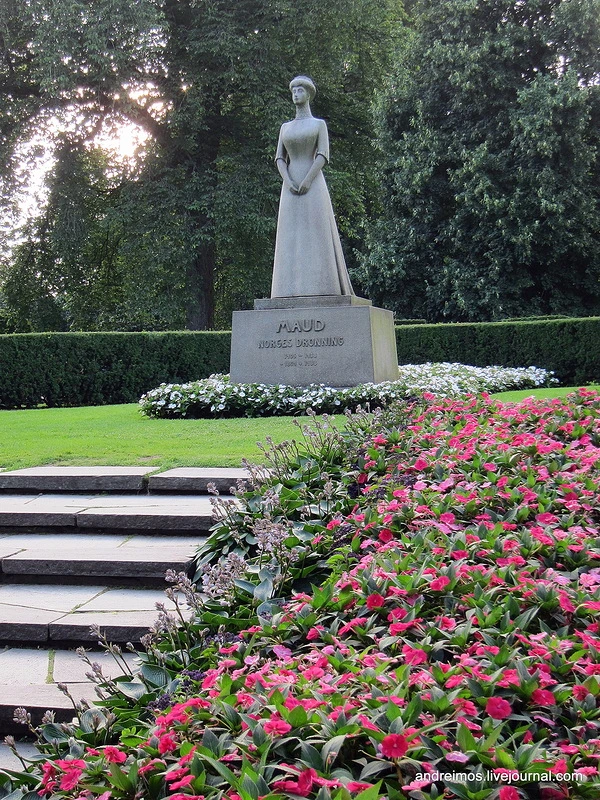
Entrance to the royal park free. They say that sometimes there can be met and the king himself.
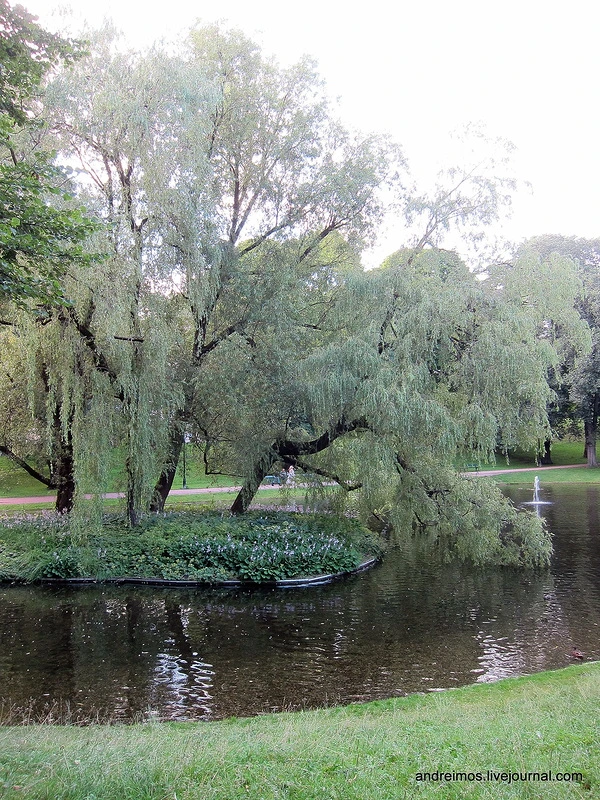
The Nobel Peace Prize Center was opened in 2005 in the former West Station Oslo. Peace Prize - the only Nobel Prize, which is awarded is not in Stockholm and Oslo.
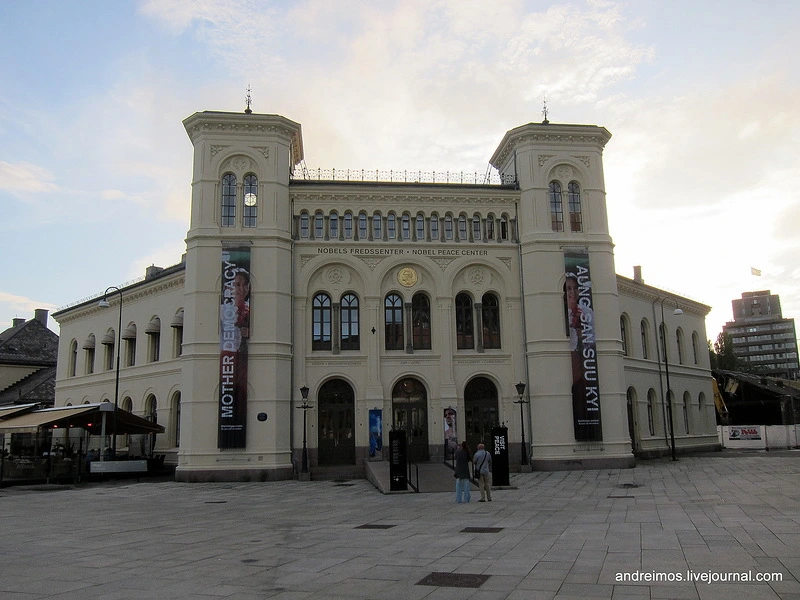
The 1901-04 award was given in the Storting, in 1905-46 - at the Nobel Institute in 1947-89 - in the atrium of the Law Faculty of the University of Oslo, and from 1990 to the present day - in the City Hall.
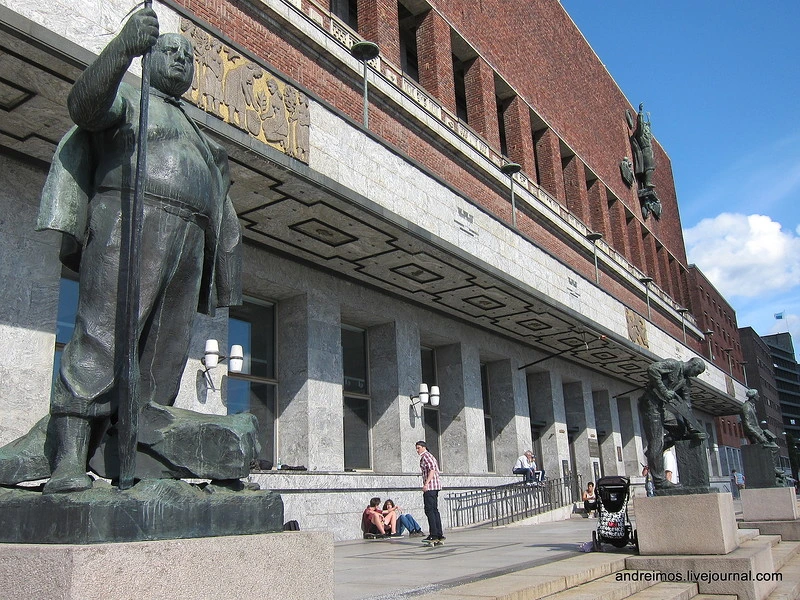
The first stone in the foundation of the City Hall was built in 1931, but World War II delayed the completion of the construction, and a new town hall was officially opened only in 1950. The combination of national romanticism, classicism and functionalism gives the building a truly unique character, but personally I would have already demolished.
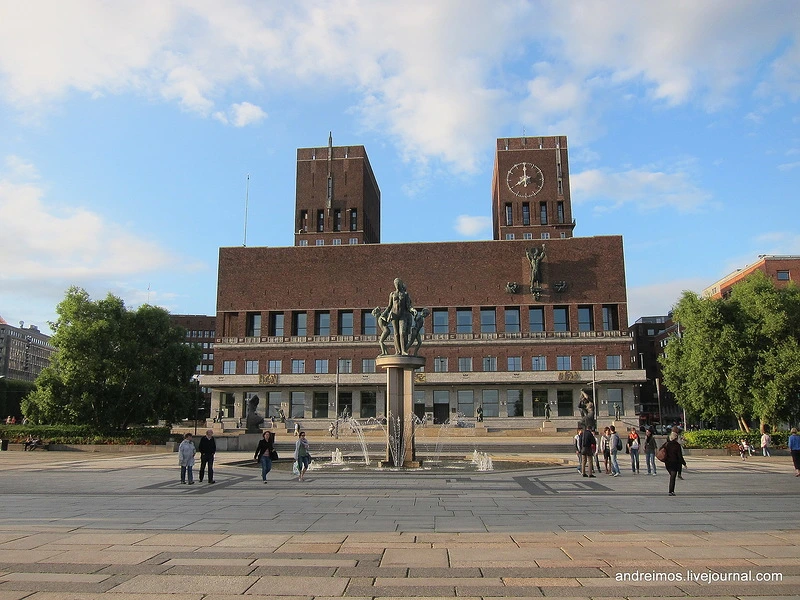
The area between the town hall and promenade decorated with numerous sculptures.
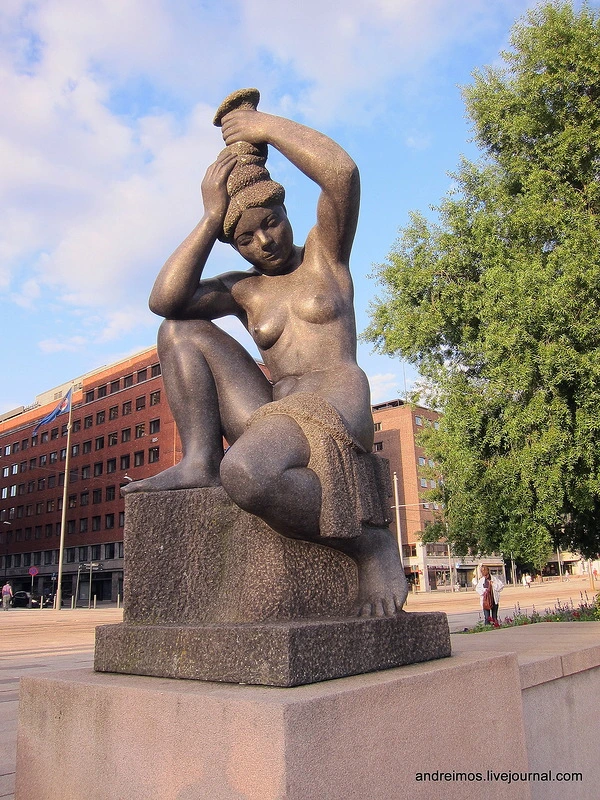
Popular monument to one of the greatest American President Franklin D. Roosevelt (1882-1945).
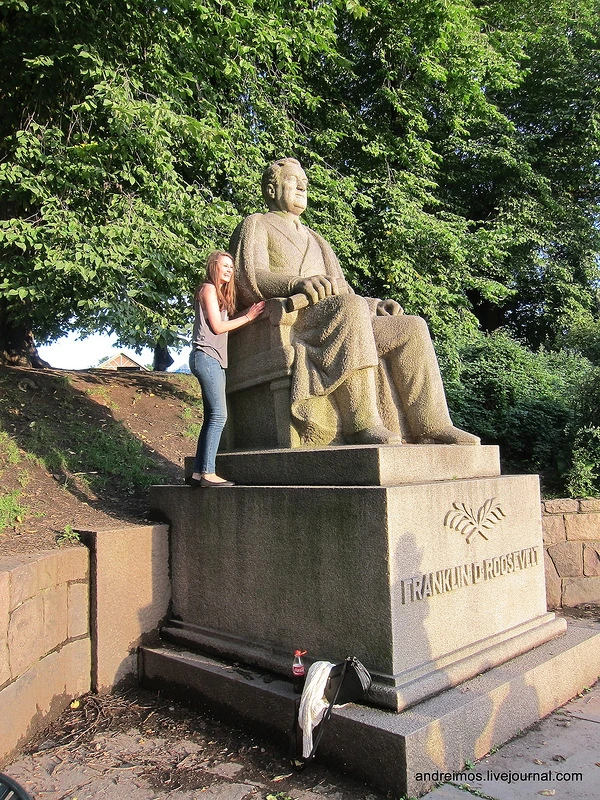
Being a port city, Oslo has around 980 companies related to maritime affairs.
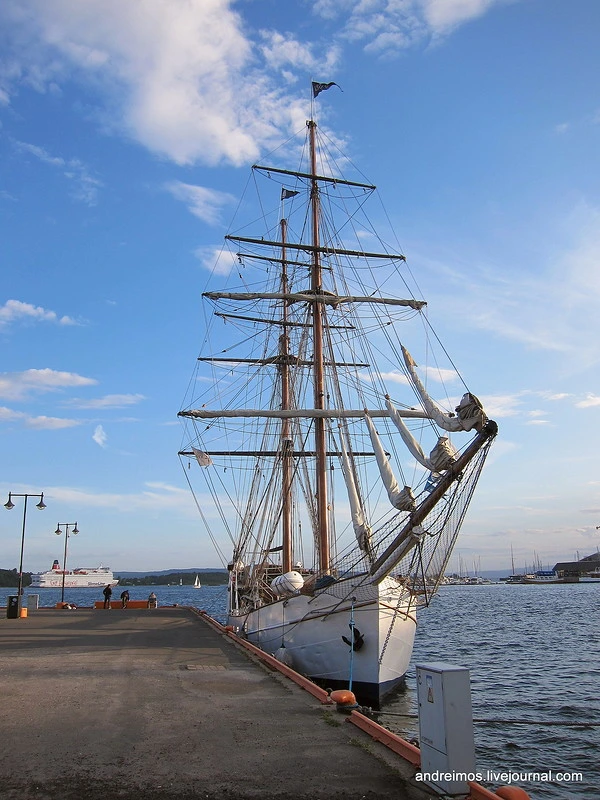
Doc Oslo annually serves about 6,000 ships with a turnover of 6 million. Tonnes and more than 5 million. Passengers.
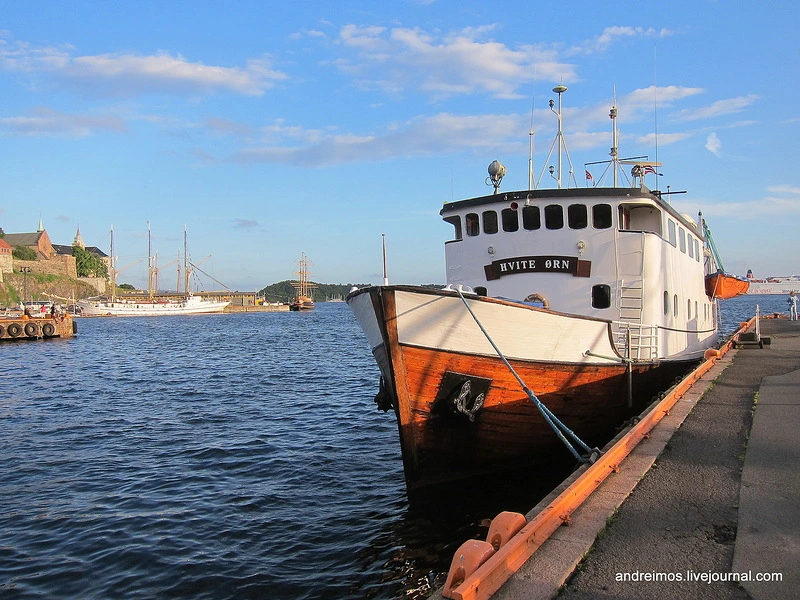
On cape jutting into the Oslo fjord, fjord separating into two bays, is Akershus Castle - it is the oldest building of Oslo. For the first time the castle is mentioned in 1300
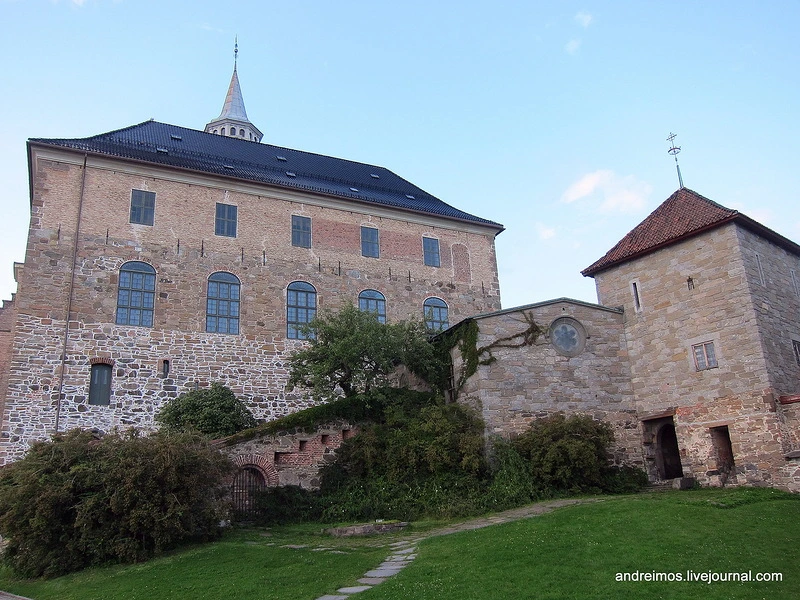
The settlement emerged around 1000 Oslo The name probably derives from "meadow beneath the ridge."
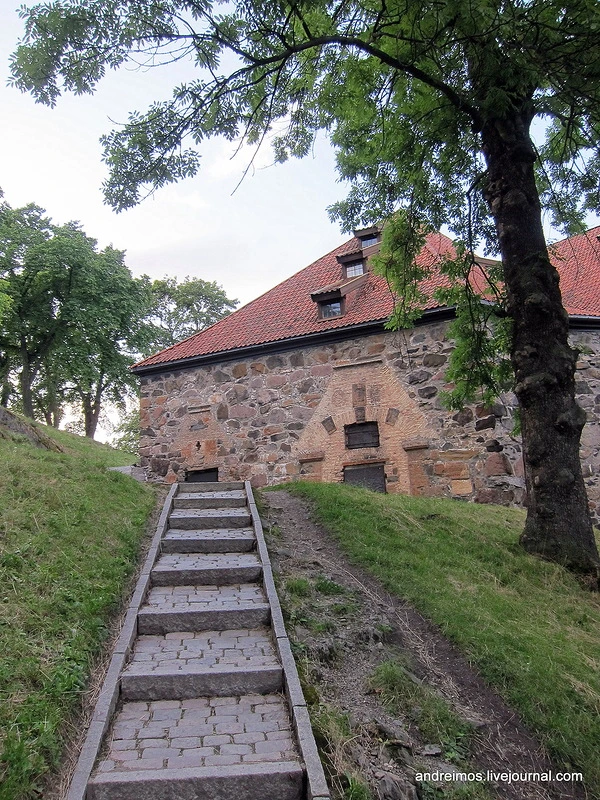
In 1624, after a major fire King Christian IV laid the walls of the fortress of the new city, which gives its name - Christian. In 1877, after a spelling reform slightly changed name to Christiania,
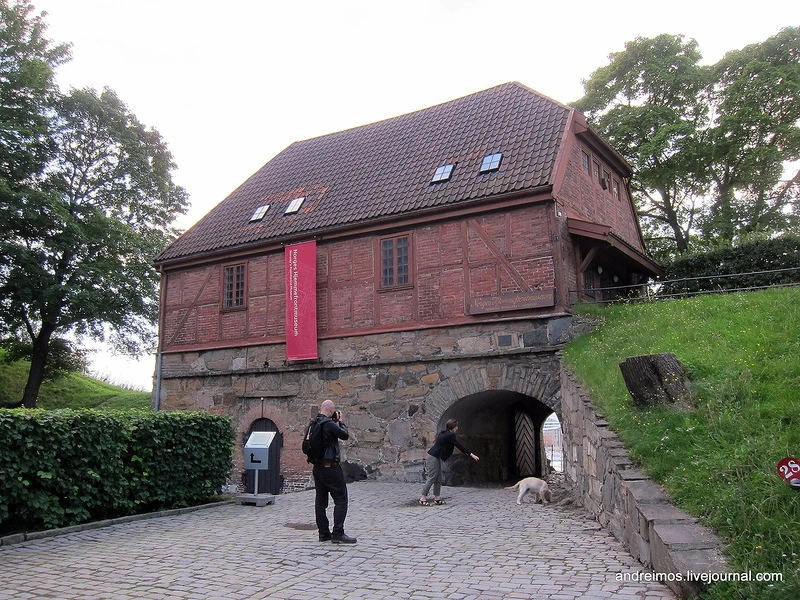
At the same time near the city retains a village Oslo. And when in 1924 there was an association, the city returned to its original name of Oslo.
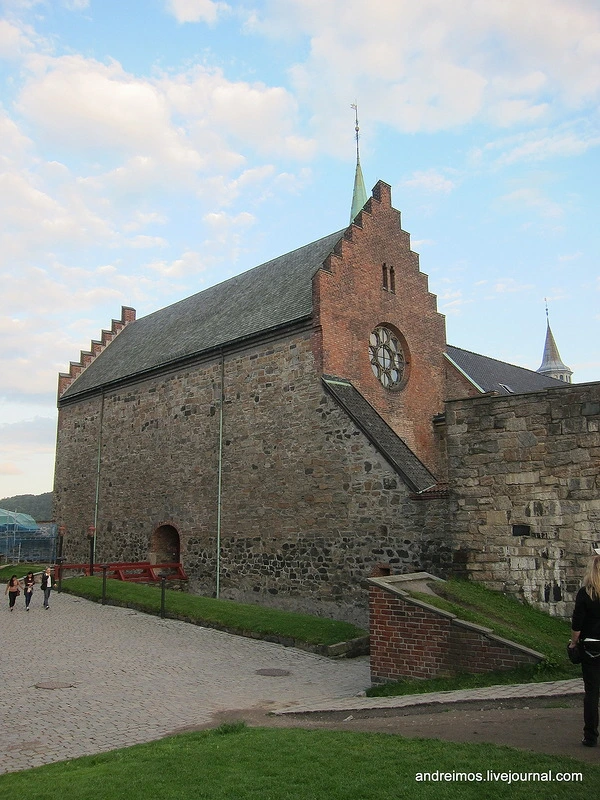
In the castle chapel are buried the Norwegian monarchy konung Sigurd I, konung Haakon V, Queen Euphemia, King Haakon VII, Queen Maud, King Olav V and Crown Princess in March.
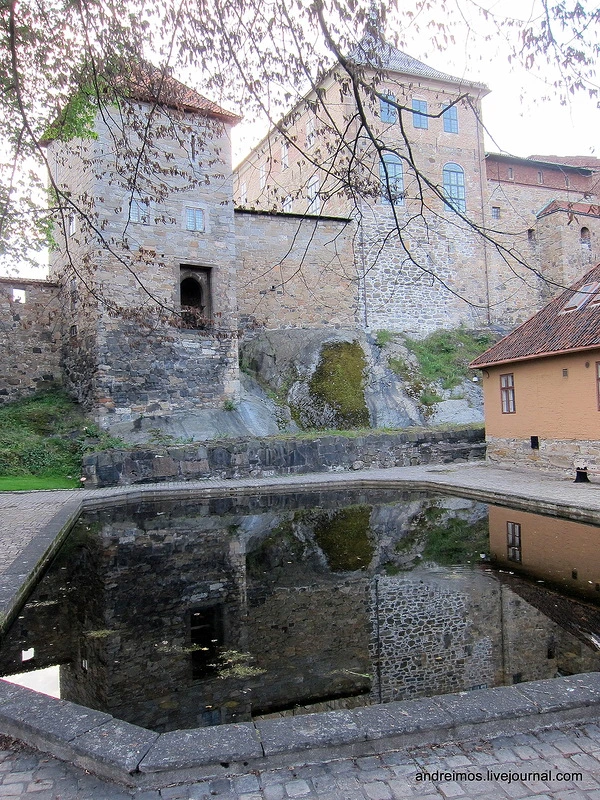
Throughout its history, the castle was never conquered as a result of the siege. Only in 1940, the Germans surrendered without a fight when the Norwegian government left Oslo. During the five-year occupation of the castle housed the Gestapo, there were executed a few people.
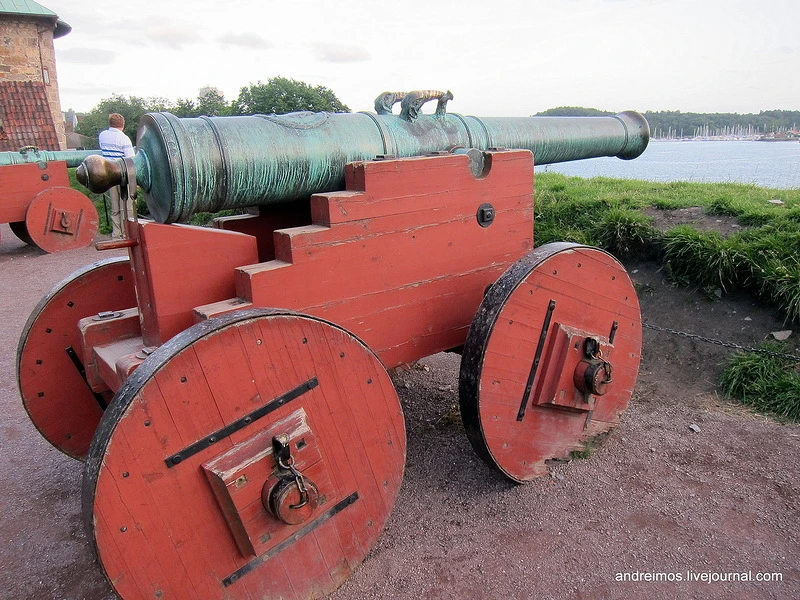
Oslo - the fastest-growing Scandinavian capital. Now the population of the city - 650 thousand. Man. Of these, about 30% - migrants.
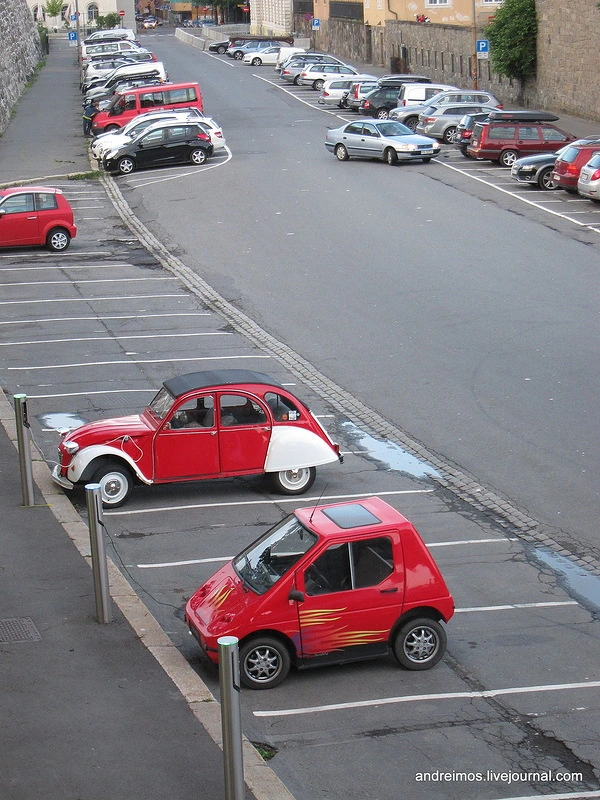
In 1999, the Norwegian government has defined the place for the future of Opera - Bjørvika peninsula, near the central station and the seaport, and announced a competition for the architectural design. The winner was the bureau Snøhetta, which became famous thanks to the project of the new library in Alexandria. Construction of the theater lasted from 2003 to 2007. Budget amounted to 4.5 billion kroons (700 mln. USD). The grand opening of the theater took place on April 12, 2008
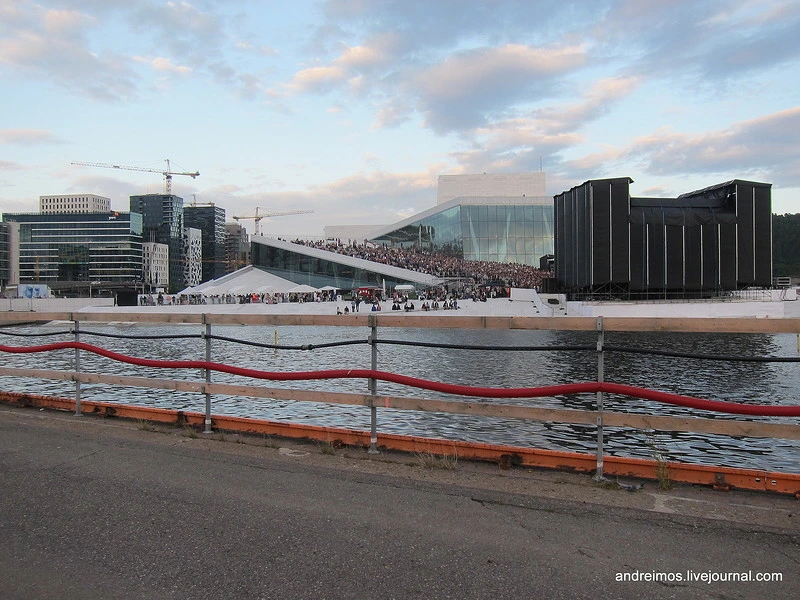
Architect's plan was to build an ultra-modern theater building, blend in Oslo fjord. The main feature is the roof, tilted toward the water - anyone can get up the ramp from the coast to the highest point of the opera. The Italian marble gives a monumental, but for the fully glazed foyer of the theater can be seen. In general, the snow-white building with broken shapes reminiscent of a huge iceberg.
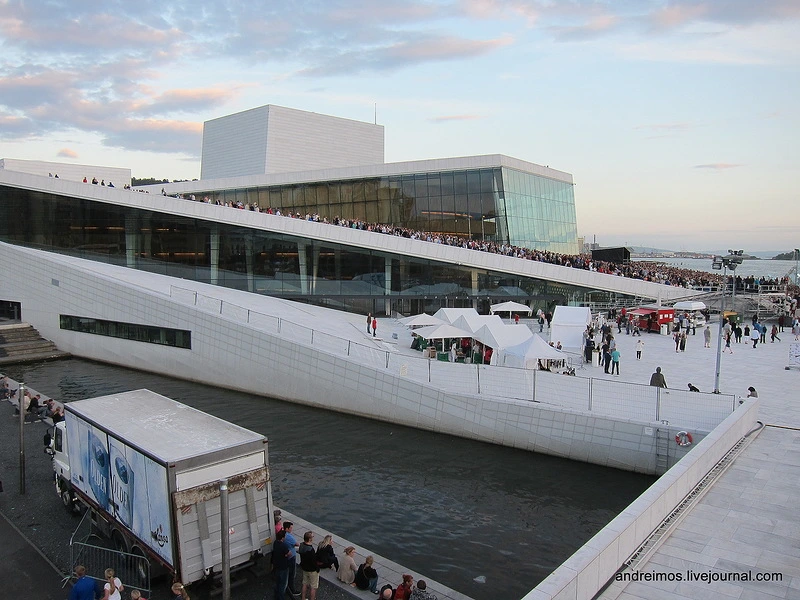
On this day in the open air concert held Norwegian rock band "Sambandet."
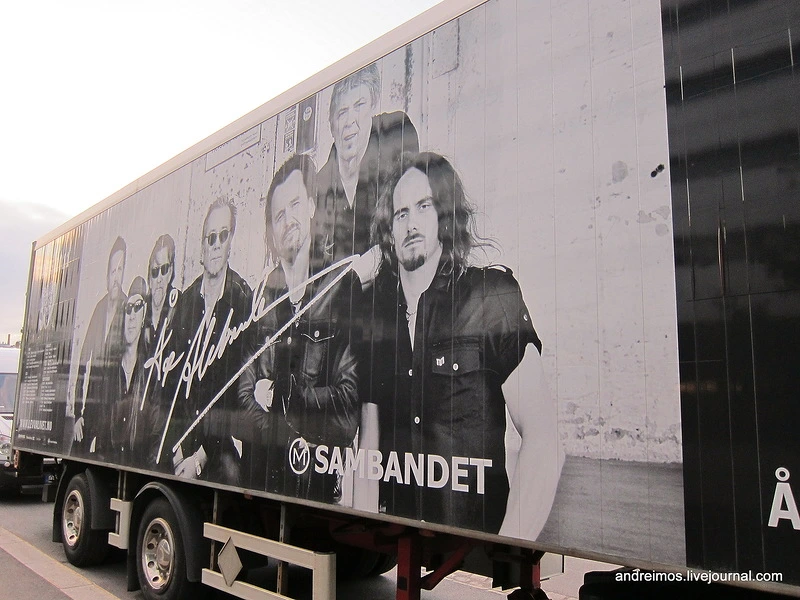
Opposite the opera on the floating platform located Monica Bonvicini song "She Lies" (2011). A prototype served as a picture of German artist of the XIX century. Caspar David Friedrich's "The Sea of Ice".
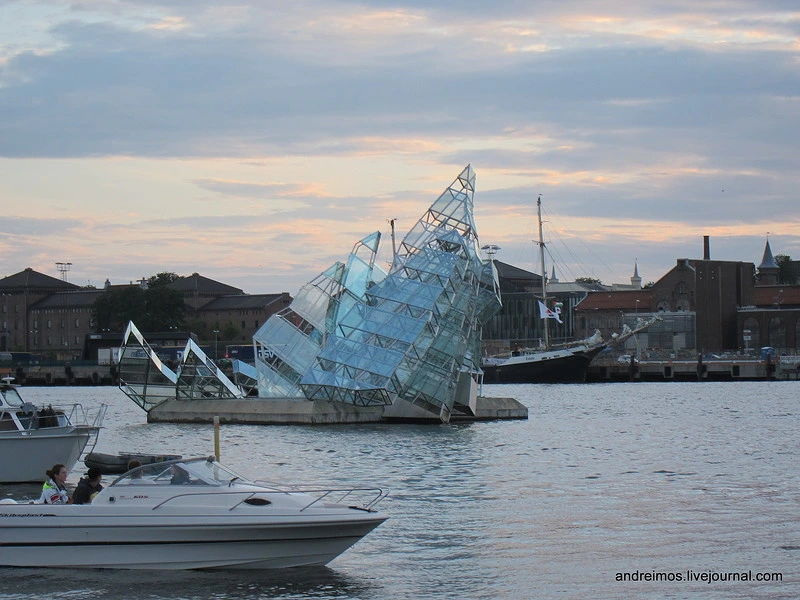
Close to the theater and the station in 2008 began construction of a high-rise district called "barcode". The project has caused great debate in society, and at some point 71% of citizens were against this construction.
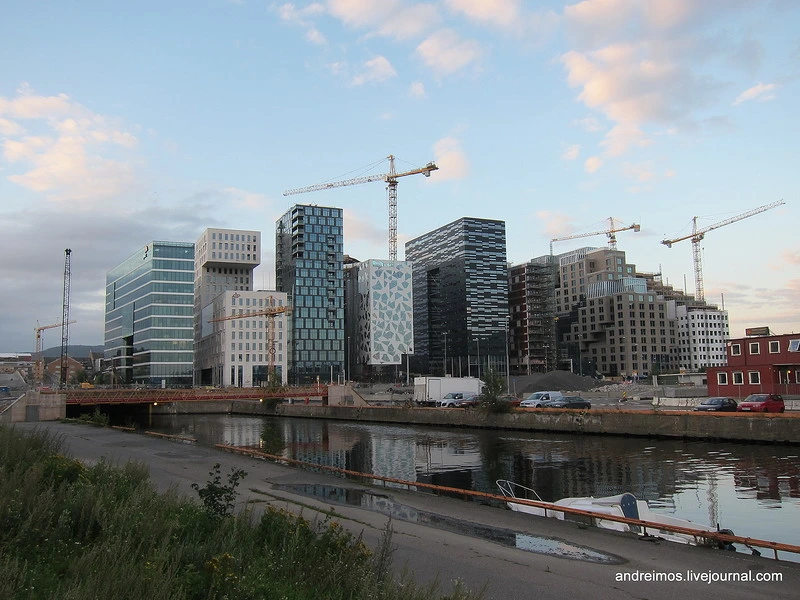
Oslo Central Station was opened in 1980 on the site of the East Railway Station.
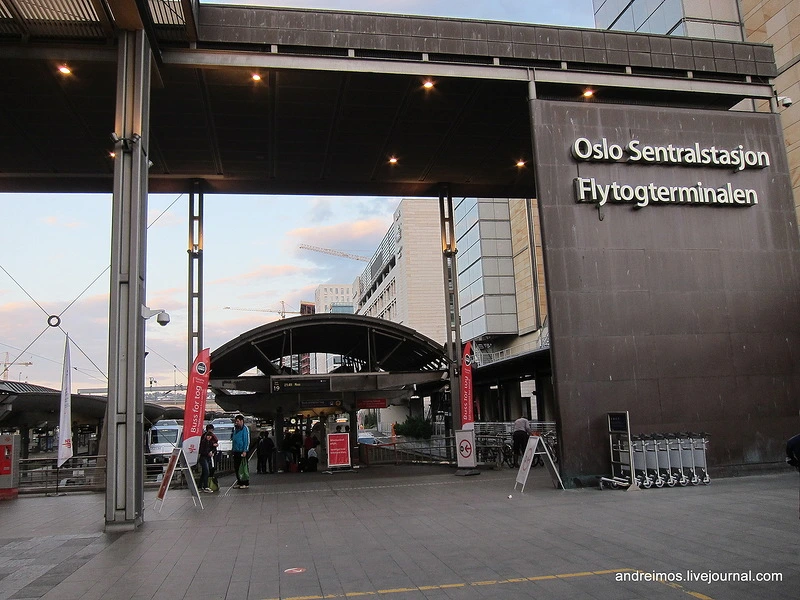
Near train station begins cereal Shippergata Street, the existence of which I during the trip did not know. Therefore, it was a little bit surprised encountered drug addicts, and even more surprised two age prostitutes, who in broad daylight offered me their services.
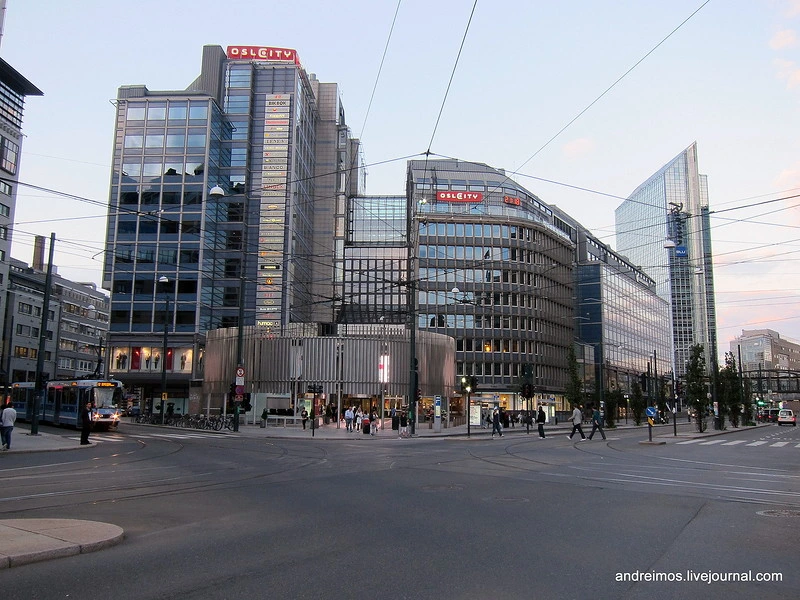
In 1870 the poet Bjørnstjerne Bjørnson wrote a poem about the tiger and the horse fight that personified a dangerous city and tranquil province. Since Oslo earned the nickname Tigerstaden. In 2000, opposite the station installed a large statue of a tiger.
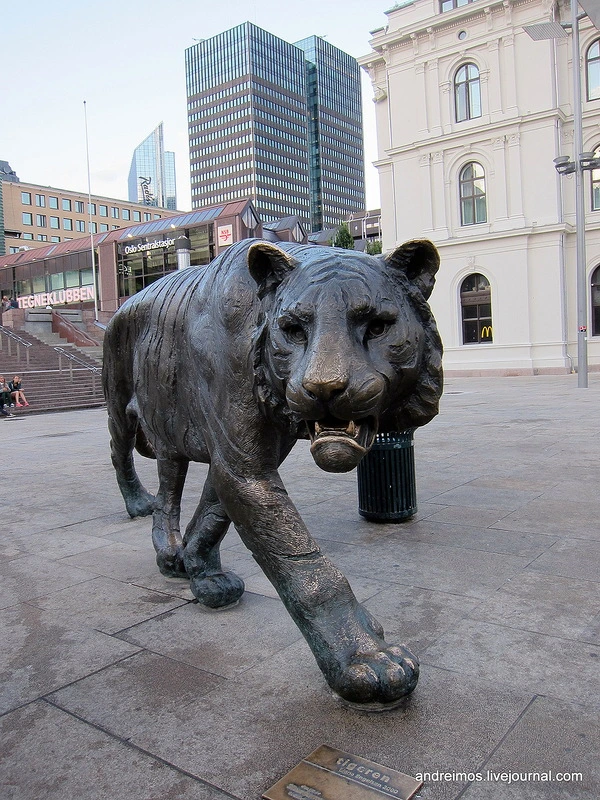
And next to the tower located information office of public transport.
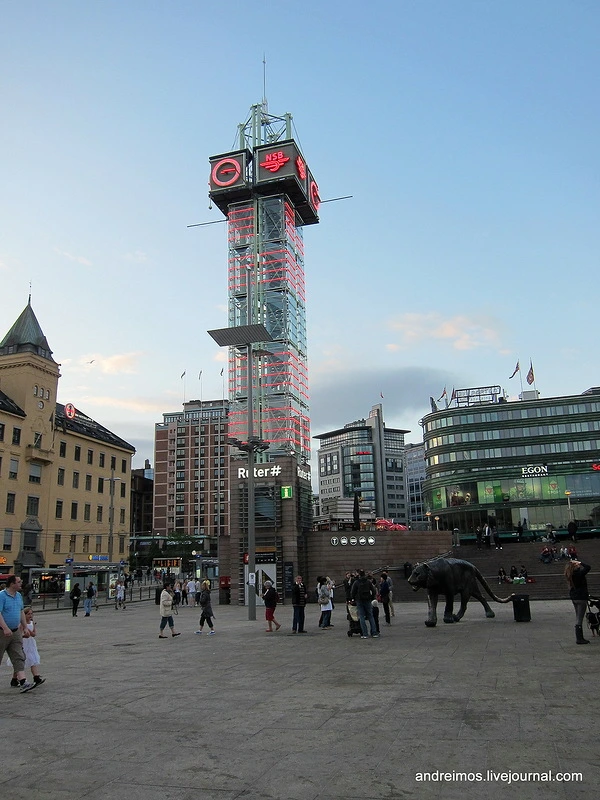
Generally, it is a modern center of Oslo, I really liked.
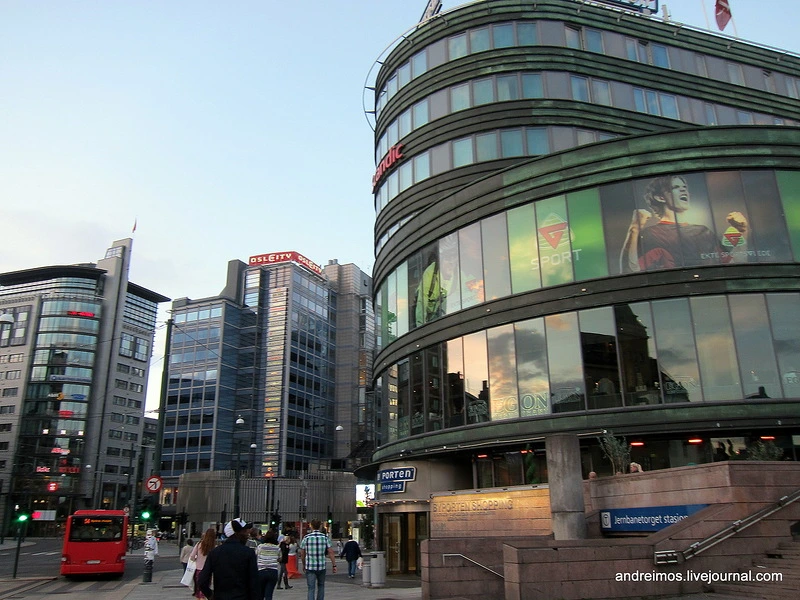
Oslo Cathedral was built in 1694-97 years.
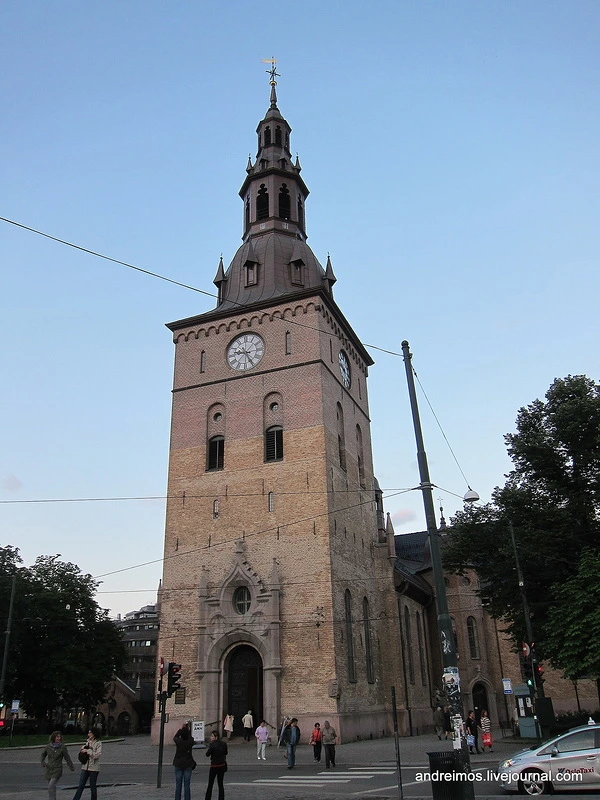
In 2011, there took place the main memorial service for those killed in the attacks Breivik. Next to the church formed a sea of flowers - this month communal taken 15 tons of flowers.
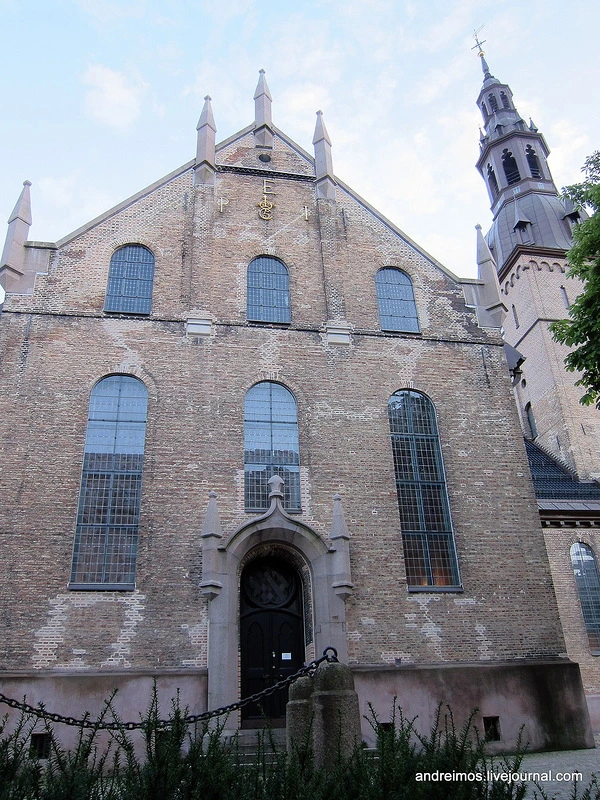
The Cathedral boasts stained glass windows of different eras and baroque altar of an unknown Dutch artist.
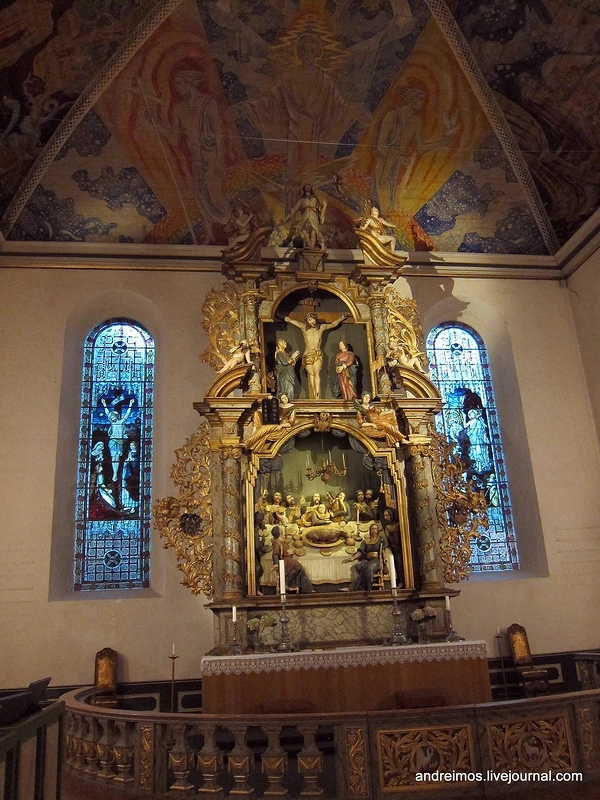
Preserved facade of the organ of the German master Kastensa (1722-27), but now has modern organ sounds.
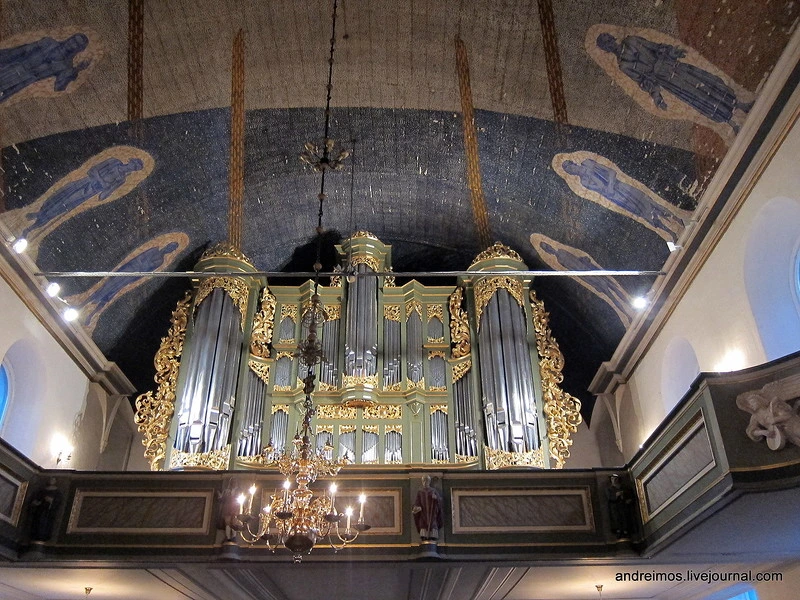
Opposite the cathedral is the main city square - Stortorvet. In 1880, a monument was erected to the Danish King Christian IV (1577-1648), which indicates the right hand, "There will be a city."
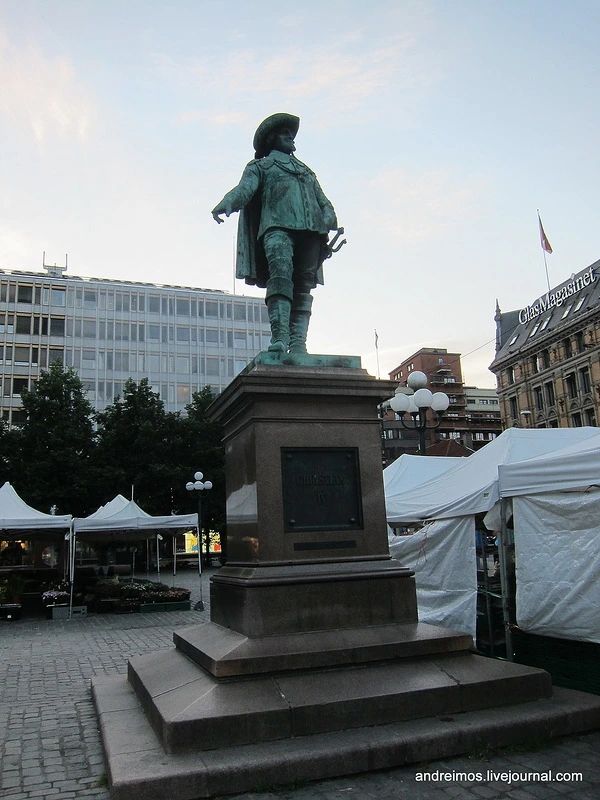
On Stortorvet located and the main office of the Norwegian railways.
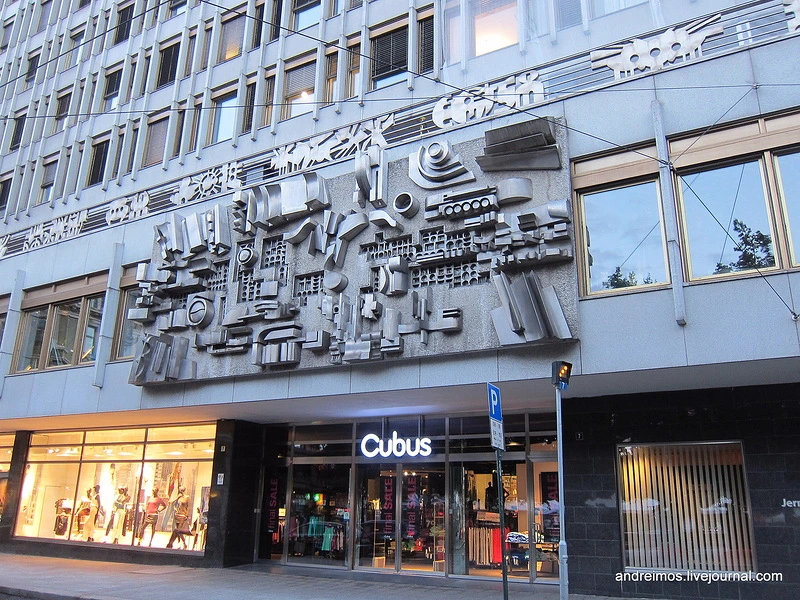
A small area Sehesteds modeled on the Place Vendome in Paris.
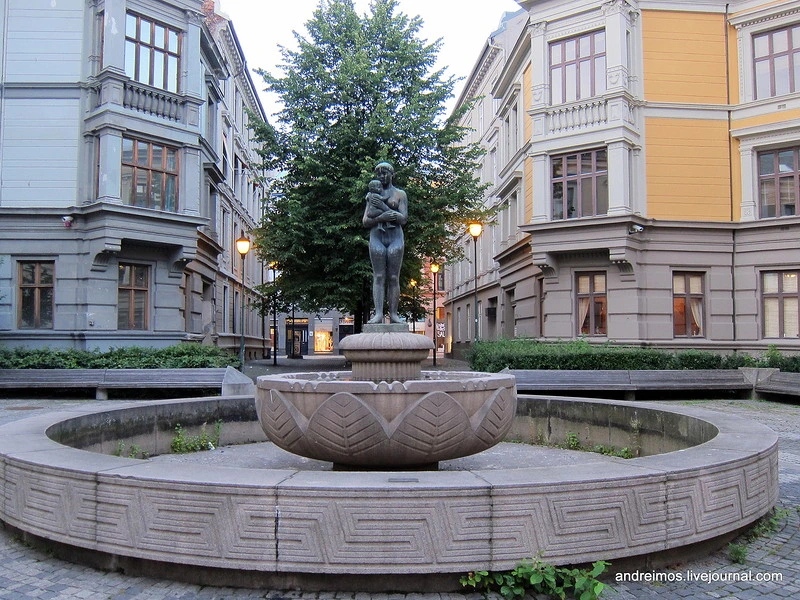
I have already shown in the Central Church of Bergen conventional building, and in Oslo, this Methodist church looks even more impressive.
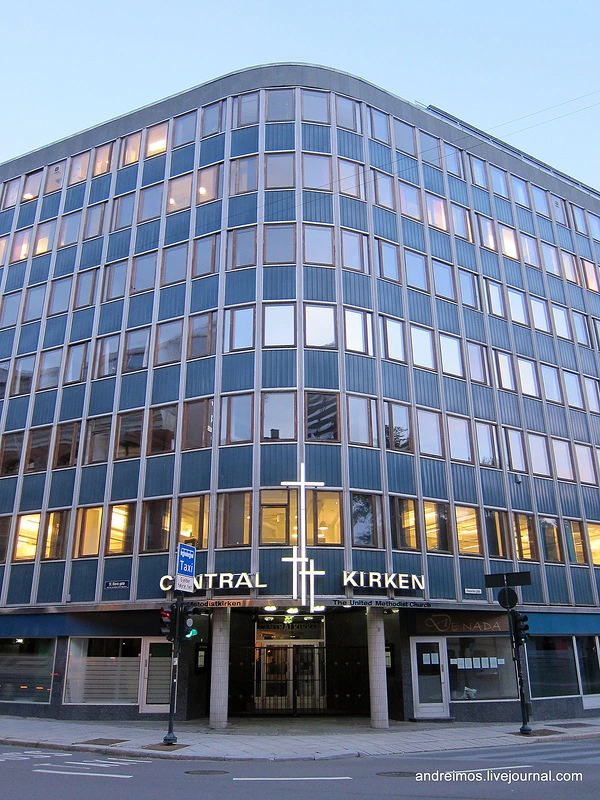
But a study of the Norwegian capital, I went the next morning ...
